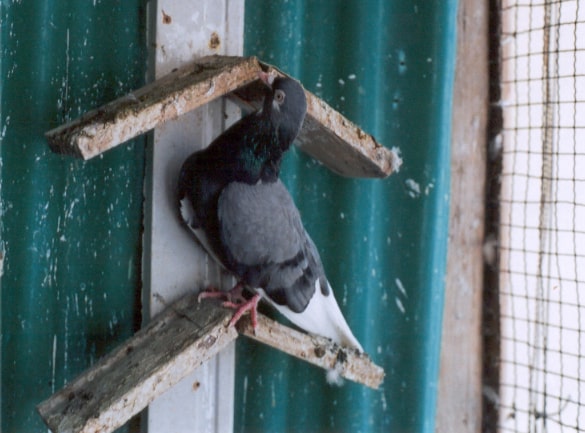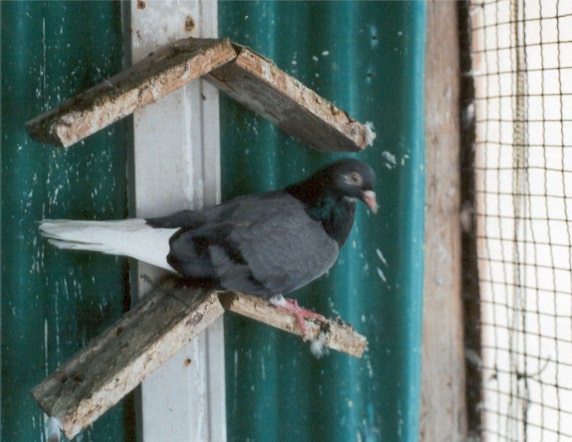
MÜLÂKAT
Mülâkat is one of our roller breeds. They are known as "Mülakat roller" and "Mulakat roller" around the world. Mülâkat is originally an Arabic word that means getting together, getting along or meeting. The reason for the name is the origin of the breed; it was created by mixing Bursa (Oynar) with rock pigeon (Columbia Livia). Name being Arabic shows that the breed was created in Ottoman times. Bursas were continuously paired with rock pigeons to improve their flight qualities and after a while a new breed was created. Today's Mülâkat is a relative of Bursa but a different breed.Some of the fanciers look at this breed as a color variation of Bursa. This thought is in no way correct. When a new breed is created by mixing two completely different breeds, it cannot be considered as a color variation of one of these breeds.
Even though these two breeds are relatives they have very different genetic make up. The most obvious genetic difference of Mülâkat is number of its tail feathers and the oil gland. Their tails consist of 14 feathers, and they have an oil gland. In relation to this, Bursas have 12 tail feathers and do not have an oil gland. Besides these, most of Bursa's physical qualities do not exist in Mülâkats. Shape of the head, beak, body, and the color of these two breeds differ in some degree or another. Moreover, the legs of Mülâkats are rather short compared to legs of Bursas.
Today, Mülâkats have been declined in numbers a great deal. One can hardly run into them where they are used to be kept in great numbers around the cities of Bursa and İstanbul. They are known to roll superior to other roller breeds. Like our other roller breeds, they also fly for long periods and at high altitudes.
Since Mülâkats were created using rock pigeons, they look very much like them. Their main color is blue. Like the wild birds they carry two bars on the wings. Their only difference to the wild birds is the white primaries and tail. They carry their wings above the tail. The white primaries are in 7 to 7 formations on the wings and the tail is completely white. Mis-markings on the wings and the tail is not an acceptable future on this breed. Even though, they are mainly blue color they can be in dark smokey, light blue and dirty blue tones.
Yavuz İşçen

